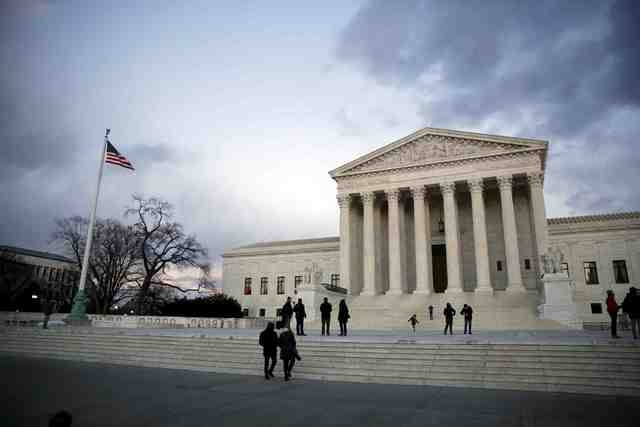Texas abortion case being heard by short-handed Supreme Court
The U.S. Supreme Court on Wednesday appeared closely divided as it considered its first major abortion case in nearly a decade, with pivotal Justice Anthony Kennedy giving little indication how he would rule in a challenge to a Texas law imposing strict regulations on clinics and abortion doctors.
Kennedy, who often casts the deciding vote in close cases, at one point suggested sending the case back to a lower court for further evidence to be introduced on the law’s impact, including an assessment of the ability of Texas clinics to meet the demand for abortions.
That could mean the case might not be resolved for years.
Some justices also questioned the lack of evidence on why specific clinics closed after the law was passed. Abortion providers assert that the law caused 22 of 41 clinics to close, but the state contests those numbers.
The state contends the law, passed in 2013 by the Republican-controlled Texas legislature and signed by a Republican governor, protects women’s health. The abortion providers who have challenged it assert that it is aimed at shutting down their clinics.
With the court one member short after the Feb. 13 death of conservative Justice Antonin Scalia, it could be split 4-4 in the case.
A 4-4 decision would let stand a lower-court ruling that affirmed the Texas law, but no nationwide legal precedent would be set on whether other states could enact similar measures. If Kennedy, a conservative, sides with the court’s four liberals, the court could either send the case back to the lower court or strike it down.
During an extended 85-minute oral argument, the liberals, led by Justice Ruth Bader Ginsburg, indicated hostility to the law. Ginsburg questioned the need for one of the provisions at issue in the case, which requires clinics to have costly, hospital-grade facilities.
“What was the problem the legislature was responding to?” she asked.
Justices on the court’s conservative wing were more sympathetic to Texas, raising questions about whether the law had closed down as many clinics as abortion providers had said.
Like Kennedy, Justice Samuel Alito faulted the lack of evidence on reasons for specific clinic closures, saying U.S. District Court Judge Lee Yeakel could have been more thorough in handling the case.
“It’s work. But maybe the district court should have done the work,” Alito said.
At one point, Kennedy expressed some discomfort with a possible increase in surgical abortions because the law placed new restrictions on medically induced abortions. He said that outcome “might not be medically wise.”
Scalia’s death means the court no longer has five conservatives who might support more restrictive abortion regulations nationwide.
Demonstrators gather
Hundreds of activists on both sides of the issue gathered outside the white marble courthouse on a chilly, blustery day. Anti-abortion lawmakers including Republican House of Representatives Speaker Paul Ryan addressed the crowd.
The Supreme Court legalized abortion more than four decades ago in its landmark ruling in the 1973 Roe v. Wade case. But abortion remains a disputed issue in the United States, as it does in many countries, and some states have passed laws aiming to place a variety of restrictions on a woman’s ability to terminate a pregnancy.
The Texas law requires abortion doctors to have “admitting privileges,” a type of formal affiliation, at a hospital within 30 miles (48 km) of the clinic. Abortion providers say the provision already has forced clinics to close because such an affiliation is hard for clinic doctors to obtain.
The abortion providers also challenged a provision, not yet in effect, that require clinics to possess hospital-grade facilities with standards for corridor width, plumbing, parking spaces, room size, the spacing of beds and many other attributes.
The Roe v. Wade ruling held that a woman’s constitutional right to privacy protects her decision to end a pregnancy, and only a compelling state interest can justify regulating abortion. The court affirmed that ruling in 1992, stating that any regulation must not impose an “undue burden” on women seeking an abortion.
At issue in Wednesday’s case was whether the Texas requirements violate that principle by putting a “substantial obstacle” in the path of a woman before a fetus becomes viable.
The case represents a high-stakes constitutional test for a strategic shift that abortion opponents have taken in recent years: to apply restrictive regulations to abortion doctors and facilities rather than try to ban the procedure outright.
The court is considering the case in the midst of the heated campaign ahead of the Nov. 8 U.S. presidential election.
A ruling is due by the end of June.
The Supreme Court’s last major abortion ruling came in 2007 when it upheld a federal law banning a late-term abortion procedure.

















